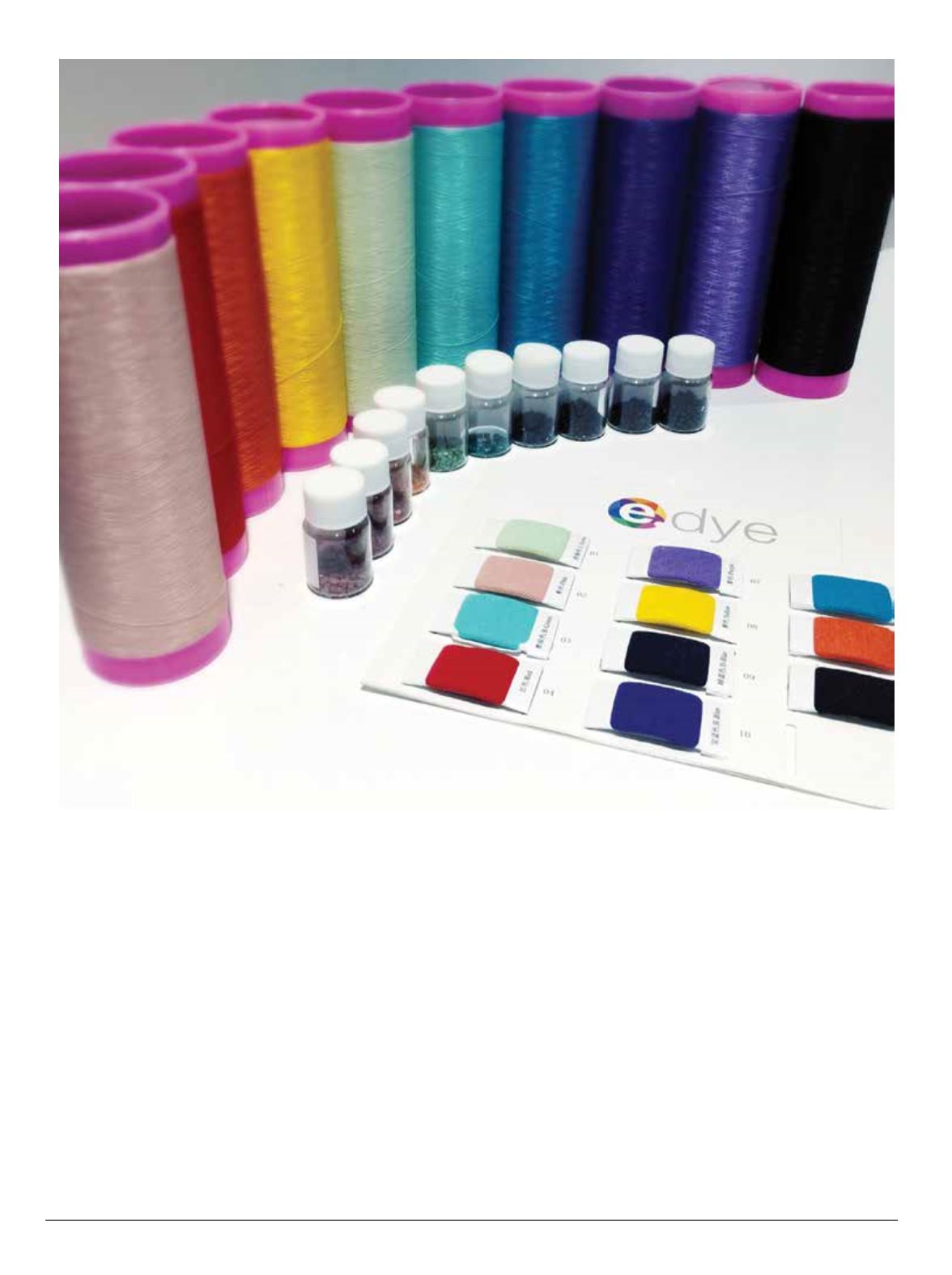

Threads, pellets and swatches display the color options at
e.dyechemical enhancers or surfactants,
and the dye uptake is efficient, un-
used dye is recovered and recycled.
Furthermore, the dyed products
are dry and very clean, obviating the
need for any washing, rinsing and dry-
ing – all resource intensive stages.
It follows, therefore, lower resource
demands translate into less air and
water pollution emissions at the pipe.
In a Life Cycle Impact Assessment
(LCIA) carried out by PE International
and 5 Winds, it was determined the
energy savings from cradle-to-gate
by supercritical CO2 to be around 35
percent over jet dyeing. However, the
overwhelming takeaway from the LCIA
is, dyeing with SCF CO2 is consider-
ably more eco-friendly than traditional
dyeing could ever be.
Even so, what if the dyeing process
started as the fiber is being created?
How would that change the narrative?
That is what
e.dyebelieves its technol-
ogy can do.
Michael Murphy,
e.dye’s sales and
marketing manager, admits that
e.dye’s
solution dyeing method (also known as
dope dyeing or spun dyeing) is ”not as
sexy as some of the emerging ‘waterless
dye’ processes.” However, it is proven,
says Murphy. “In fact, part of the appeal
was that we could put a ‘twist’ on an off-
the-shelf industrial process.”
The twist is an all-important one
in which without it,
e.dyewould just
be any other solution dye process. In
effect, the improvement was not on
the process itself but in
e.dye’s move
to help jumpstart the adoption of
this technology. To understand how
a strategic change to the business
model can make that happen is to
know solution dyeing.
The key
to solution dyeing
is adding pigment to the molten
polyester as it is being made into pel-
lets, then later re-melted and extruded
into fiber (Figure 3). This process locks
the pigment into the polyester filaments,
making it resistant to fading by repeated
washings, exposure to sunlight, bleach
and sweat. Hard to dye textiles such as
polypropylene, nylon and rayon can be
dyed using this process.
Going back to Figure 1, solution
dyeing would begin in a new process
box at the top of the flow chart, mak-
ing many of the processes to follow
redundant. Various rinse, wash,
chemical agents and heat cycles are
eliminated, as well as any dyestuff
that could be flushed out of the fac-
tory and into the local water supply.
Given that, solution dyeing’s envi-
Inside
Outdoor
|
SUMMER
2017
38
















